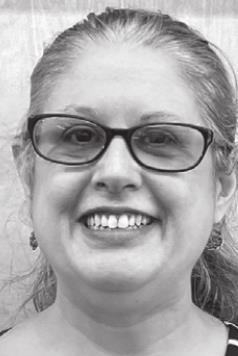
Answers to Go
San Marcos Public Library
625 E. Hopkins St.
512-393-8200
Q.What is the “Body Farm” at Texas State University?
The “Body Farm” A. or “Body Ranch” is the nickname for the Forensic Anthropology Research Facility (FARF) at Texas State.
The FARF is a 26-acre outdoor human decomposition research laboratory at Texas State’s Freeman Ranch. The size of the facility makes it the largest of its kind in the world. Human corpses are left to decay under various circumstances throughout the facility (open air, buried, in vehicles, covered, etc.) in order to study their rates of decomposition. This information assists law enforcement in their assessment of time of death of other decomposing bodies found during investigations. The FARF is also a training facility. It is used to train law enforcement, forensic anthropology students and medicolegal (relating to both medicine and law) personnel in the search, recovery, retrieval, and assessment of human remains. According to FARF’s website (retrieved on 9/27/21 at txstate.edu/anthropology/facts/labs/farf.html ):
“FARF was conceived because there is a need to develop rates, patterns, and sequences of human decay applicable to Texas and western states. The FARF formally opened in 2008. Since then, research has been conducted on approximately 650 donor individuals, with another 1,000 living people preregistered as donors to this unique forensic program. Once the donor bodies are removed from FARF and processed at ORPL, they are kept in perpetuity and accessioned into the permanent Texas State Donated Skeletal Collection. This collection of documented modern skeletal remains will form the basis of future research and be utilized for scientific research and education for years to come.”
FARF is just one part of the Forensic Anthropology Center at Texas State (FACTS). FACTS is a multifaceted center that includes the Forensic Anthropology Research Facility (FARF), a body donation program, the Osteological Research and Processing Laboratory (ORPL) and the Grady Early Building, which houses the Grady Early Forensic Anthropology Research Laboratory (GEFARL). Workshops such as “Identifying Human vs. Nonhuman Bones” and “Human Remains Recovery Course” are offered for law enforcement and other medico-legal personnel. In addition to this training, the body donation program allows researchers the opportunity to study human decomposition and bones for many years to come.
NOTE: If you would like to learn more about “Body Farms” and forensic processes, the library these books from legendary forensic anthropologist Dr. Bill Bass:
• “Beyond the Body farm: a Legendary Bone Detective Explores Murders, Mysteries and the Revolution in Forensic Science.”
“Death’s Acre: Inside the Legendary Forensic Lab ‘The Body Farm’ Where the Dead Do Tell Tales.”
For the younger (and more squeamish) reader, the library has the following in the juvenile collection:
“Talking Bones: The Science of Forensic Anthropology” by Peggy Thomas
“The Bone Detectives: How Forensic Anthropologists Solve Crimes and Uncover Mysteries of the Dead” by Donna M. Jackson
Suzanne Sanders is the new columnist for the library. She is the Community Services Manager for the San Marcos Public Library and came from the Austin Public Library in 2015 after having served there as a librarian for over 20 years. She gratefully accepts your questions for this column.











